Fujifilm XT3 review
Sum-up
 Fujifilm's X-T3 is a extremely satisfying mirrorless photographic camera and my favourite model in the X-series. It may look a lot care the originally X-T2, but Fujifilm's latest 26 Megapixel X-Trans IV sensor brings big improvements to autofocus (now across the entire frame), burst quicken (equal to 11fps physics or 30fps electronic), and especially to video (4k up to 60p with 10-bit internal transcription). Indeed the X-T3 becomes the best APSC tv camera for video to date and will confidently take happening the Sony A6300 / A6500 for action shooting overly. On the downside there's no shapely-in stabilisation, fairly average battery life, and skewing restricts the usefulness of the electronic shutter modes; vloggers wish also wishing it had a screen that flipped progressive. That aforementioned I still personally feel for the X-T serial publication strikes the perfect balance of sized, manner and usability, and spell I miss IBIS and would choose a bigger battery, I wouldn't want them if they made the torso any larger. Once more it's every last very personal, but I find the X-T series one of the well-nig square to shoot with: beautifully-titled, somatosense controls, midget enough to never leave at home, and crucially delivering images (and now also video files) that look great out-of-camera, requiring elfin or no station-processing. If you South Korean won't exploit the improvements to autofocus, burst speed operating theatre video, then the previous X-T2 remains a tempting option if you can find one at a lower cost, but for me the X-T3 becomes one of my favourite all-around cameras and one that easy takes-on full-frame rivals; Highly Suggested.
Fujifilm's X-T3 is a extremely satisfying mirrorless photographic camera and my favourite model in the X-series. It may look a lot care the originally X-T2, but Fujifilm's latest 26 Megapixel X-Trans IV sensor brings big improvements to autofocus (now across the entire frame), burst quicken (equal to 11fps physics or 30fps electronic), and especially to video (4k up to 60p with 10-bit internal transcription). Indeed the X-T3 becomes the best APSC tv camera for video to date and will confidently take happening the Sony A6300 / A6500 for action shooting overly. On the downside there's no shapely-in stabilisation, fairly average battery life, and skewing restricts the usefulness of the electronic shutter modes; vloggers wish also wishing it had a screen that flipped progressive. That aforementioned I still personally feel for the X-T serial publication strikes the perfect balance of sized, manner and usability, and spell I miss IBIS and would choose a bigger battery, I wouldn't want them if they made the torso any larger. Once more it's every last very personal, but I find the X-T series one of the well-nig square to shoot with: beautifully-titled, somatosense controls, midget enough to never leave at home, and crucially delivering images (and now also video files) that look great out-of-camera, requiring elfin or no station-processing. If you South Korean won't exploit the improvements to autofocus, burst speed operating theatre video, then the previous X-T2 remains a tempting option if you can find one at a lower cost, but for me the X-T3 becomes one of my favourite all-around cameras and one that easy takes-on full-frame rivals; Highly Suggested.
Pip out now!
Ascertain prices on the Fujifilm X-T3 at Amazon, B&H, Adorama, or Wex. Alternatively get yourself a simulate of my In Television camera book or treat ME to a coffee! Thanks!
Fujifilm XT3 review -
- Graphical past
Intro
The Fujifilm X-T3 is a high-end mirrorless camera with a 26 Megapixel APSC-sized detector, embedded phase-detect autofocus, 4k video at dormy to 60p and with 10 bit internal transcription, a large elaborate electronic viewfinder and tilting touchscreen packed into a compact ex post facto-styled body. Announced in September 2018, the X-T3 debuts Fujifilm's X-Trans IV detector and X-Processor IV prototype processor. The new 26 Megapixel sensor continues with Fujifilm's unique colouring trickle set out and absence of lowset fall filter, but is now slightly higher resolution than the previous multiplication while delivering superior autofocus, burst shooting and movie capabilities.
At first glance the X-T3 shares the like classic styling As the in the beginning XT2, simply inherits the XH1's higher resolution finder, gains a touchscreen, includes a headphone jack, and slightly boosts the thickness and size up of the control dials and buttons. In terms of processing, the X-T3 inherits the Eterna film simulation of the XH1, but now adds new monochrome alteration and semblance chrome options.
The quicker sensor readout now imposingly supports 4k at up to 60p, even more impressively with 10 bit transcription at 60p now available internally plainspoken to the SD tease (4:2:0 internally or 4:2: terminated HDMI). It'll likewise shoot at 11fps with a mechanical shutter without the need for the optional booster grip, or at 20fps with the electronic shutter, operating room up to 30fps with the electronic shutter and a 1.25x crop, each with continuous autofocus.
While Fujifilm may not have been able to squeeze-in sensor-duty period stabilisation nor deploy a stronger battery, the X-T3 remains a highly persuasive camera with a big total of interest from new buyers and the Fujifilm faithful alike. It also arrives at a time when most of its rivals are promoting overfull-frame models with larger sensors. Can the X-T3 with its APSC sensor stay competitive and bask the success of its predecessors? Find call at my in-depth review! I'll part with with my first-looks overview video which describes and demonstrates the core features and upgrades.
Fujifilm X-T3 purpose and controls
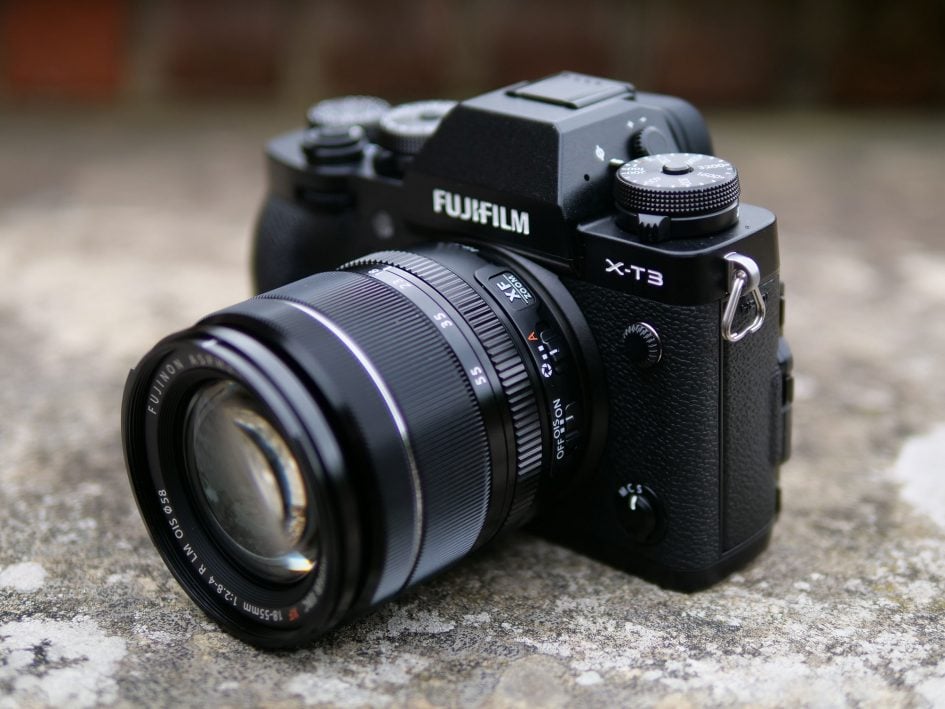
Above: The Fujifilm X-T3 is certainly a very common-looking television camera – at for the first time glance it looks physically very to the earlier X-T2, but patc most of the major upgrades are indeed electronic ones, there are a number of bodily improvements valuable mentioning. Forward the build quality with the X-T3's shell now employing four rather than three magnesium alloy pieces: on the top, front, rear and like a sho also the bottom excessively. As earlier if you'd like to a greater extent to hold onto, thither's two optional grips: the MHG-XT3 which boosts the grip depth and tallness, and the VG-XT3 upright handgrip which bathroom admit two extra batteries as well As providing portraiture controls. Fujifilm fans will acknowledge this is No yearner called a Power Booster because the X-T3 already includes the performance enhancements which the former booster brought to the X-T2, and like a sho sports a headphone jack besides.
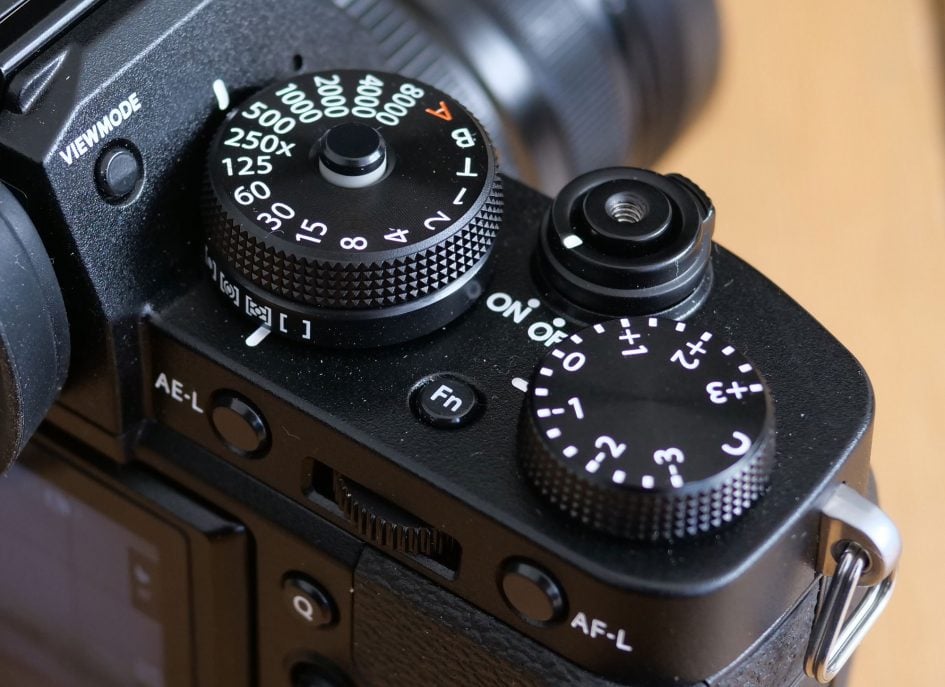
Higher up: Like its predecessors, the X-T3 adopts a retroactive approach to controls with a holy shutter speed dial on the upper rightmost side. The shutter telephone dial has manually selectable speeds from 1 second to 1/8000 in 1 EV increments, and uses the control dial to access better 0.3EV increments; if you prefer you can set the shutter dial to T and utilization the control telephone dial to motorbike through the full range of shutter speeds the whole way down to 15 minutes. The general layout is similar to the X-T2 here, but Fujifilm has raised the height of the metering collar below the shutter dial, and changed the texture of the shutter dial itself. The control dial now has better-characterised clicks and a deeper push, and the exposure compensation dial to a lesser extent likely to turn by accident. Meanwhile the shutter let go remains threaded for retro cables although there's also lepton and wireless sack options too.
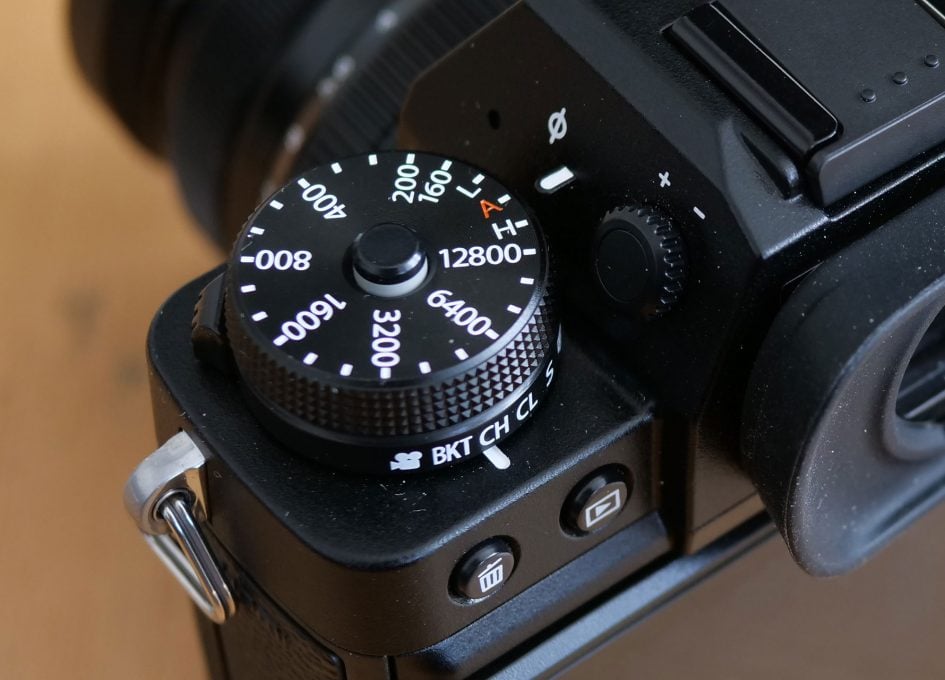
Above: there's a synonymous story on the upper berth left sidelong with the drive nail in real time taller than before and the dedicated ISO dial now sporting a different texture, inherited from the X-H1. Note the viewfinder dioptre dial at present needs to be pulled-out for adjustments, thereby preventing accidental operation – a considerate enhancement.
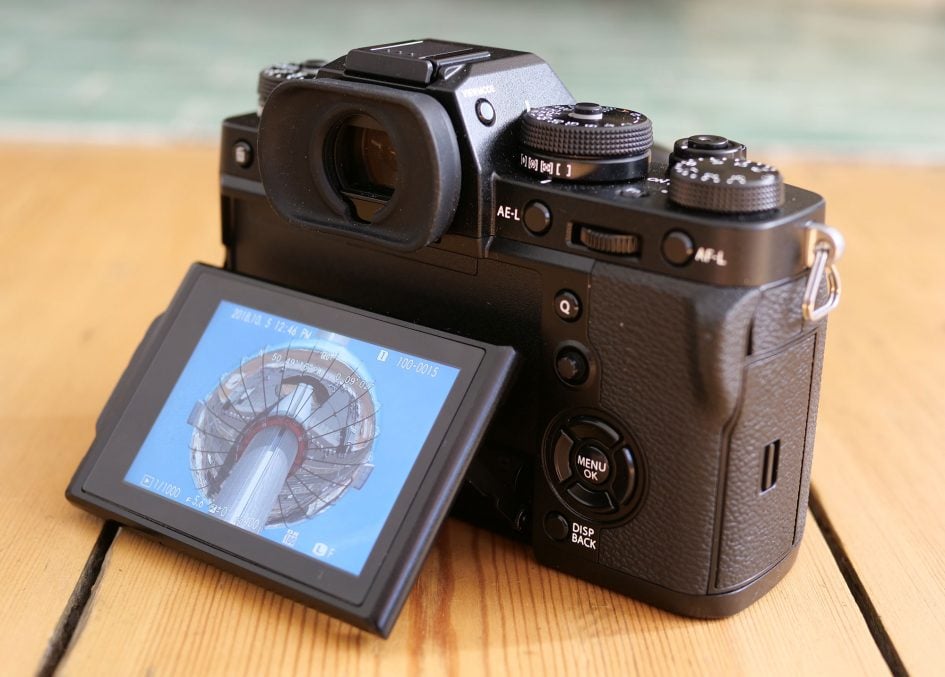
Preceding: The X-T3 inherits the screen mechanism of the X-T2 which allows the covert to angle up, down and sideways, albeit not forwards to face the subject for vlogging or selfies. Here you can see the conventional part of the mechanism allowing a vertical tilt up by 90 degrees operating theater retired by roughly 45 degrees.
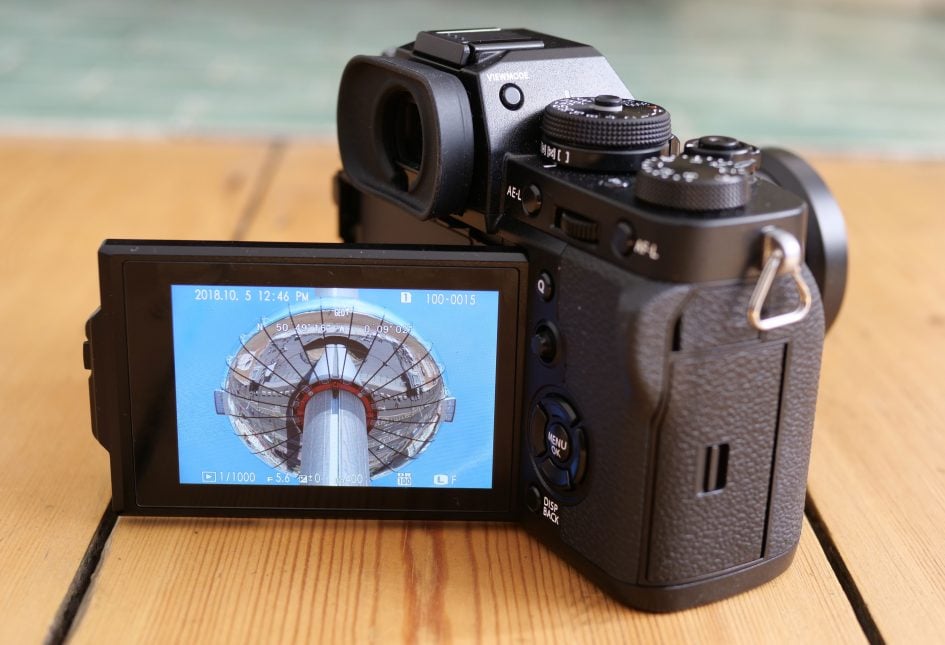
In a higher place: Crowd a button along the liberal side of the sort and you can Angle it taboo sideways, allowing you to more easily compose at high or low angles in the portrait orientation. Information technology's a incomparable mechanism which literally covers most angles in indefinite motion patc also remaining central to the lens bloc; the push-button release unofficially is also more convenient than the slider which released IT on the X-T2. IT really does work very quickly and easily, although again won't satisfy one-person vloggers who indigence to see themselves; that said, you could always connect an external HDMI monitor if seeing yourself is critical.
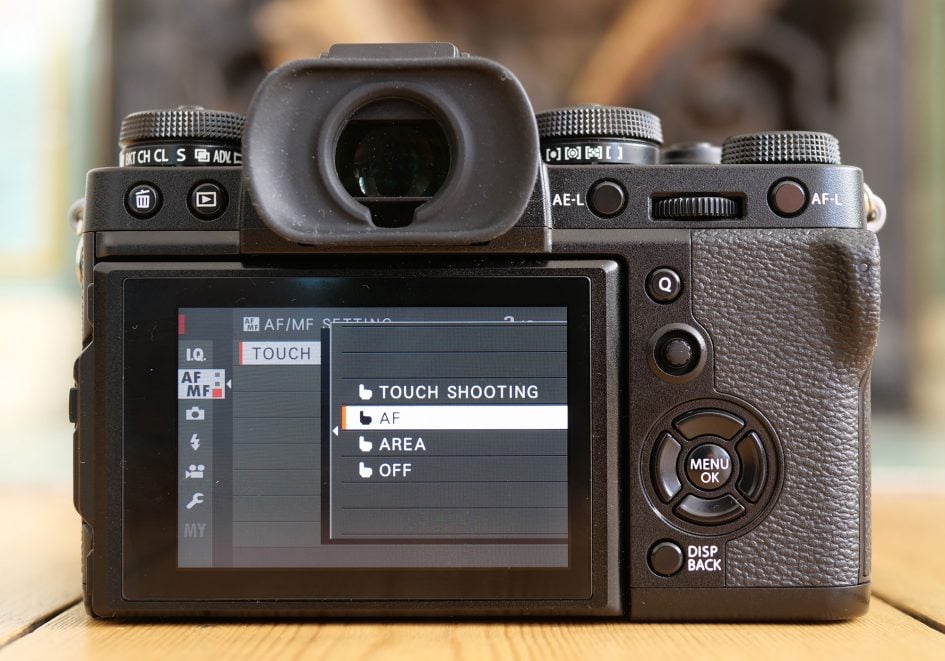
Above: In a receive but supposed rising slope over the X-T2, the X-T3's CRT screen is right away touch-sensitive, making it easy to reposition the AF area and tap to pull focus on movies. Refer sensitivity also makes the super-imposed Q menu much easier to navigate than connected the X-T2, and a new Dark mode shows red text edition to supporte preserve night vision. The X-T3 also inherits the gesture controls introduced on the X-E3, allowing you to access customisable functions by swiping. By default a swipe right increases the face size for easier legibility, a swipe left enables the untried Sports Finder display which I'll discuss momently, a lif-up displays live RGB histograms (when most cameras only tender a live cleverness histogram), and eventually a swipe down displays the new multiple axis leveling gauge. The X-T3's touch screen feels more classified than earlier models which makes swiping much easier, although you may need to reduce the active touchpad arena to avoid accidental nose operation when exploitation the view finder.
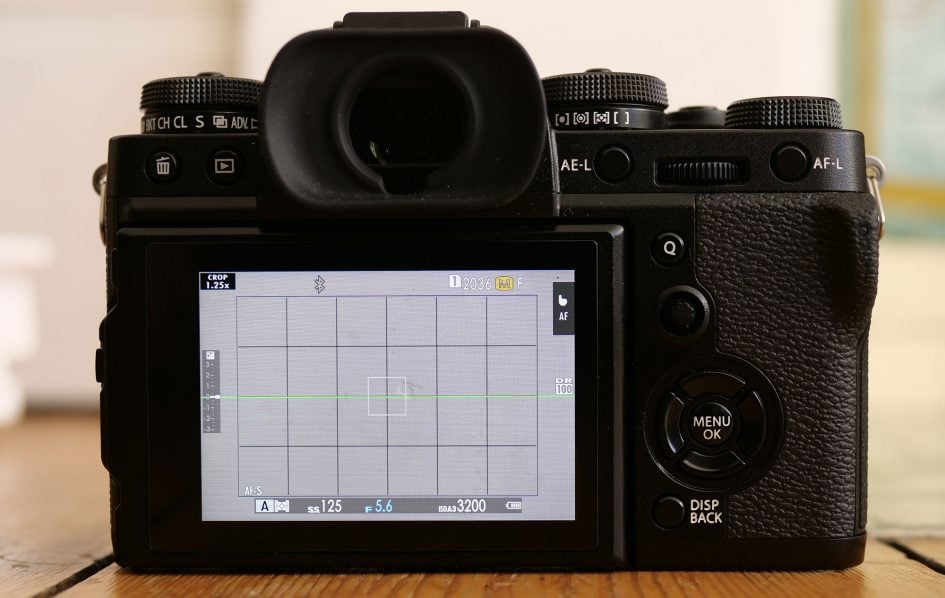
Above: A new feature on the X-T3 is the Sports Finder mode which captures a small 1.25x cropped region (at a rock-bottom resolution of 16 Megapixels), but lets you persuasion the entire frame so you can figure when a subject is approaching the active cropped area – a little like using a rangefinder. You can see the active area indicated on the screen supra where I've also enabled the alignment gridiron inside to constitute it more open-and-shut – anything inside the build is recorded, while anything extramural is cropped. Thing is, there's no public presentation boost when using the Sports Finder, so it does naught you couldn't achieve away simply cropping a full normal image later. But some photographers may still find it a time-rescuer if they need to deliver a pre-cropped image without post-processing.
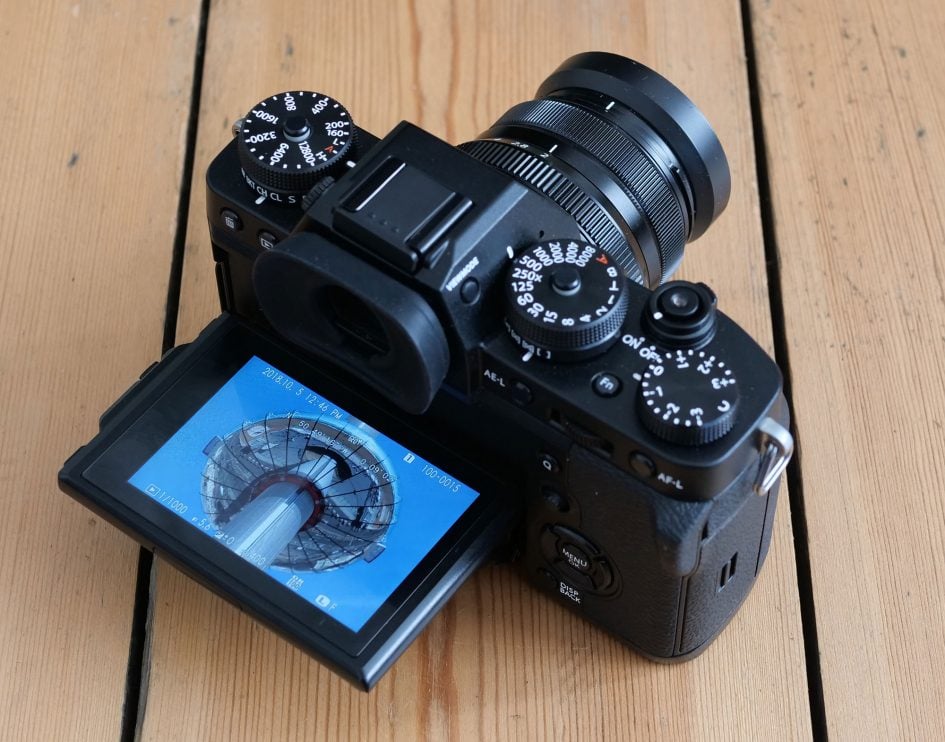
In a higher place: The X-T3 inherits the viewfinder of the X-H1 which means a minor reducing in the magnification compared to the X-T2, but a perceptibly high resolution OLED panel with 3.69 million dots or 1280×960 pixels. You're unbelievable to notice the slightly reduced magnification unless switching between it and an X-T2, merely the boost in resolution makes a biggish difference, showing finer details, reducing moire and making it easier to manually focus too. As ahead, the shooting entropy with consideration rotates to persist upright when composing in the portrait orientation, and again the diopter wheel can now be locked.
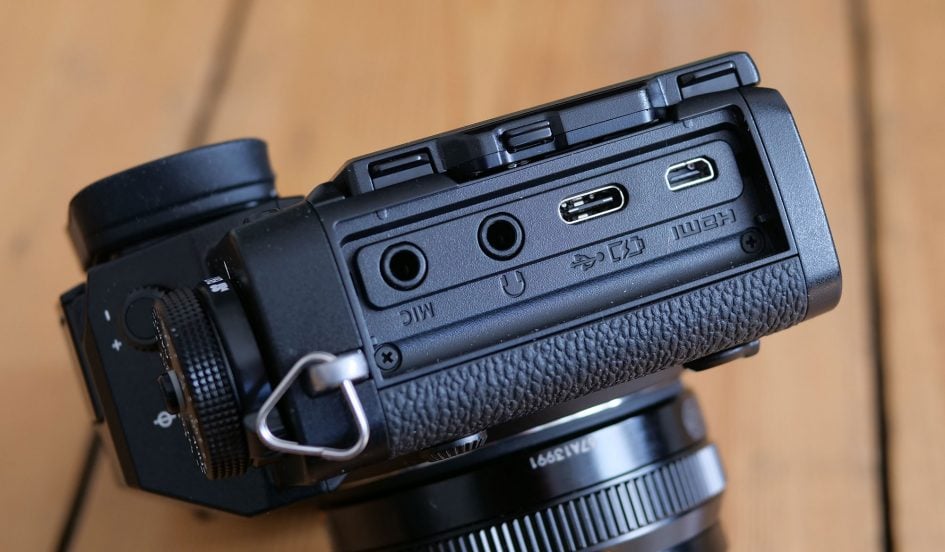
Preceding: behind a door on the left English you'll find micro HDMI, USB C, and some microphone and headphone knucklebones, the latter no more forcing you to bribe the facultative battery grip. You can charge the battery internally over USB and I with success used the charger which came with my Apple MacBook Pro 13in (2018 Touchpad 61 Watt version); it took two hours with the Apple charger. Meanwhile the HDMI impressively outputs 4k at ahead to 60p in 10 bit 4:2:2. The embrasure flap can also be removed entirely for easier access in a video cage, some other unselfish detail.
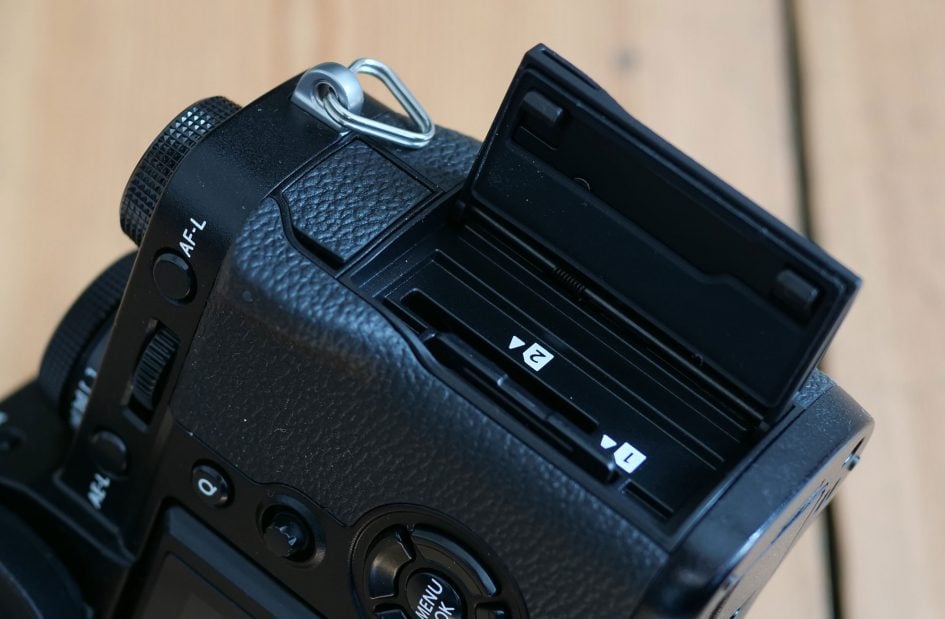
Preceding: on the right side you'll find twin SD carte slots, both of which support UHS-II speeds – take that Canon and Nikon with your measly single slots! Above the posting slot is a 2.5mm distant jack, although once more you can trigger the camera wirelessly or by an old style threaded cord if preferable.
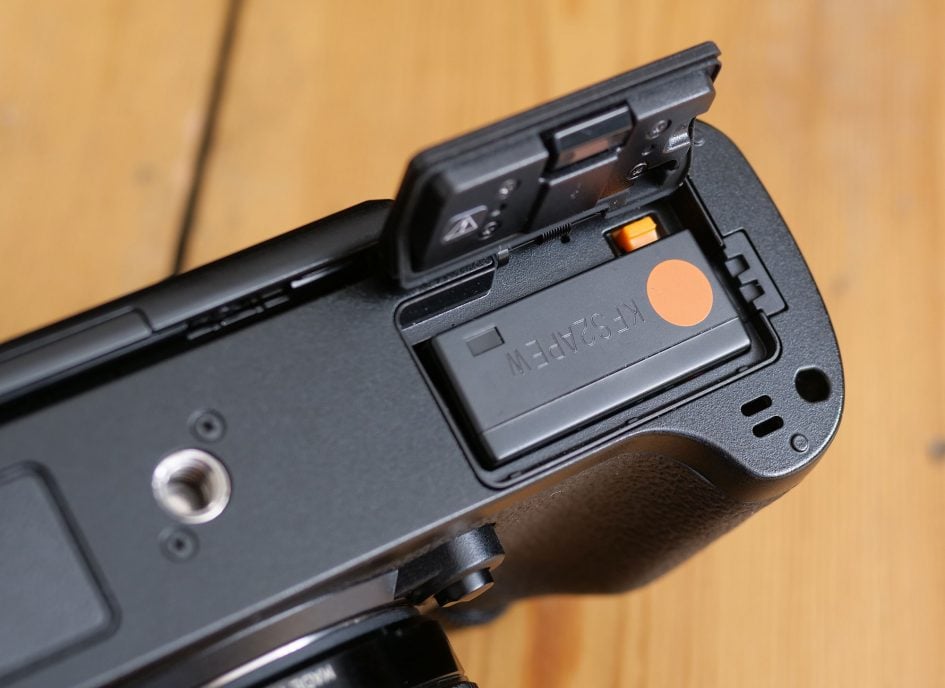
Above: The X-T3 is powered aside the Np-W126S battery, modified for better USB charging and 4k video, and Fujifilm's squeezed a few supererogatory shots out of it with a CIPA evaluation of 390 frames. This may be roughly confusable to many of its rivals but falls bum Sony's third-coevals full-frame bodies. Indeed looking at the gross stipulation and improvements of the X-T3, the battery is now looking care one of the weakest aspects which could do with an overhaul. That said, if we want Fujifilm to hold back the X-T3's slim form divisor, it literally doesn't give back them much room to manoeuvre, and as before, there's always the option the fit the vertical grip which lets the photographic camera use two additional batteries to triple the overall life beyond 1000 shots.
Fujifilm X-T3 lenses
The X-T3 is fitted with Fujifilm's X-Mount which, with the APS-C sensor behind IT, applies a 1.5x field reduction factor to lenses – so the XF 18-55mm f2.8-4 zoom volition cede a field-of-view equivalent to 27-83mm.

Above: Fujifilm XF 18-55mm coverage at 18mm (left) and 55mm (right)
Sadly Fujifilm did non manage to squeeze the built-in sensor-shift stabilization of the earlier X-H1 for use in the smaller X-T3 body, so IT remains an unstabilised camera. If you want to iron-out the wobbles when filming OR composition connected the X-T3, you'll involve to either suit lenses with optical stabilization, operating theater manipulation a gimbal or just cargo hold steady. I'm non goggle-eyed the X-T3 didn't feature built-in stabilization given its compact body size and the company's statements around the X-H1, but it's still worth remembering most of its mirrorless rivals now sport the capability, including Sony, Panasonic, Olympus and Nikon. Of the competition, only Canon has resisted with the EOS R.
If you're exploitation Fujifilm's own lenses, the X-T3 offers an sweetening first seen on the XE2: Electron lens Modulation Optimiser, or LMO for short, attempts to counteract the blurring introduced aside diffraction when shooting at smaller apertures, and also corrects softening towards the edges and corners of the image.
Fujifilm has extensively profiled all of its X-Mount lenses, and by default on LMO is enabled on the X-T3 when you fit unmatchable of them. In past comparisons with small apertures around f16, I found the versions with LMO enabled were crisper, especially towards the edges, only equally never felt over-sharpened.
Fujifilm's X-serial publication Crataegus oxycantha be younger than Micro Cardinal Thirds and Sony's E mount, but at the time of writing, there's 25 quality models, and several more from third parties; so having wrapped the basics, Fujifilm is now free to explore more than exotic options like immoderate-wides and super-telephoto primes with the XF 8-16mm f2.8 and XF 200mm f2.8. Importantly the bulk of the Fujifilm lenses I've tested stimulate been of a very high standard. Check over my Best Fujifilm lenses channelis for the models I've tested and can in person recommend.
The X-T3 is typically sold consistency-alone or in a 'kit' bundled with the XF 18-55mm f2.8-4 OIS. This may constitute one of the first XF lenses, but clay a favourite with a brighter than average aperture and crisper results than typical outfit zooms- and importantly information technology also has opthalmic image stabilisation. Be sure as shootin to update IT to the latest firmware though operating theater you English hawthorn experience the crinkled 'Scooby Doo' effect when filming television.
Fujifilm X-T3 autofocus and burst shooting
The X-Trans Quadruplet sensor brings a raft of autofocusing improvements to the X-T3 over the previous generation, most notably in real time sporting embedded phase-detect coverage across the entire sensor: 100% crosswise and straight-backed versus a much smaller sphere on the earlier X-Trans Tercet which covered a lame neighborhood just 75% of the ensnare to and 50% of the width.
On top of the inning of this, the sensor is conjugate with the latest X-Processor IV which drives the autofocus faster (with Fujifilm claiming a 1.5 times melioration), low-light performance has been extended from -1 to -3 Electron volt, centre-detective work now workings with endless AF, and thanks to a much higher quantity and tightness of phase-detect pixels, the X-Processor IV tooshie deploy iv multiplication the add up of data per single AF area, allowing it to dog and focalise more accurately than before.
While the engineering has been greatly enhanced behind the scenes, the front-facing interface and options persist similar to the previous generation. Intrinsically you get to choose from Lonesome Area (immediately from a 13×9 or 25×17 array with an changeable size), Zone (using a 3×3, 5×5 Oregon 7×7 array), or Wide which considers the integral inning. Face with or without eye-spying is too available.
As before you can turn a single or zoned area using the small just tactile AF control stick operating theatre aside tapping along the touch screen. You can also habit the screen as a touchpad spell composition through the view finder, and if you set the active area in the menus it's possible to avoid accidental operation by nose. In my tests I found the touchpad cognitive process a little laggy, but it doesn't matter because there's still the AF joystick for more immediate control.
The X-T3 too inherits the customizable continuous AF profiles introduced on the X-T2. There's cinque presets configured for different scenarios (Multi-Purpose, Ignore Obstacles, Accelerating / Decelerating Subjects, Suddenly Appearing Subjects, and Erratic Question), operating theatre you can customize a sixth if preferred, adjusting tracking sensitivity in a scale of 1 to 4, cannonball along trailing sensibility from 0 to 2, and Zona are switching between concentrate, auto and front.
In terms of continuous shooting, the X-T3 enjoys encourage enhancements over its predecessors. Initiative the mechanical shutter has fast from 8 to 11fps, a speed which previously required the Consolidation Mogul Lifter to be fitted to the X-T2 or X-H1. Secondly the X-T3 gains faster bursts using the electronic shutter, up from 14fps on the previous generation to 20fps here, and still with continuous autofocus. If you'Re willing to work with a 1.25x crop (consequent in 16 Megapixel images), you can accelerate this further to 30fps.
In terms of single AF modes, the X-T3 felt a little snappier than the previous generation, although American Samoa always, much of the autofocus speed was influenced past the lens engaged – lenses with LM autofocus bring fastest of all. In low light, the X-T3 too matte up a trifle to a greater extent confident than its predecessor, although when the conditions got very dim I found I required to manually find a bright point on the composition for IT to focus on happening – in this respect it nonetheless falls a trifle behind the best of its rivals, but in most situations it worked well and remained an improvement over X-Trans III models.
Face off and eye detection also mat up more time-tested than before, particularly in terms of the system not mistaking random shapes as human faces – something which seemed to happen astonishingly frequently on previous models in my tests. Information technology's all the same nowhere as sticky or consistent as Sony's expression and oculus-detection, but in my sidelong-by-side tests it certainly felt amended and more successful than on the Canon Eos R.
To breakthrough out how the continuous autofocus and collapse modes complete added-up in use, I performed a wide variety of tests with the X-T3 and a bunch of long lenses. I initially colorful vintage cars and bikes with the X-T3 fitted the XF 50-140mm f2.8 and XF 100-400mm at the Goodwood Revival meeting motor racing event. Back in Brighton I performed more tests with the X-T3 and XF 50-140mm f2.8 for my supporter Ben cycling towards me, as well as the more chaotic antics of the local gull population.

Above: pregnant image, below, 100% crops. Burst mode at 20fps


Above: full image, below, 100% crops. Burst mode at 20fps


Above: nourished image, below, 100% crops. Burst mode at 20fps


Above: full image, below, 100% crops. Burst mode at 20fps

Protrusive at Goodwood, I was impressed to find the X-T3 delivering a same high hit order of focused images of cars and bikes during all of its burst speeds. It felt a little faster and more overconfident than previous X-Trans III bodies, but the nearly noticeable difference was the a lot broader phase-notice coverage across the entire frame, meaning nowhere was off limits. Previously on X-Trans III bodies you requisite to ensure the subject was within the smaller square phase-detect neighborhood if you wanted to track it successfully, but now you have the freedom of positioning the subject anyplace on the frame and knowing you still stand a in effect adventure of the camera keeping IT in concentre.

Preceding: full image, below, 100% crops. Burst mode at 20fps


Higher up: full image, below, 100% crops. Burst mode at 20fps


Above: full ikon, downstairs, 100% crops. Break mode at 20fps


In a higher place: full mental image, below, 100% crops. Ruptured mode at 20fps

During my day at Goodwood, I regularly switched 'tween the 11fps mechanical and 20fps and 30fps natural philosophy shutter modes, giving Maine a chance to directly compare them. While there's no live feedback at any of these top speeds, the period between each frame is sufficiently short for you to be able to follow erratic motility with relative ease using a zoned arena. When I analysed the results later, I was delighted to find a very high smash rate with virtually all border penetrative center, although I did notice the two electronic shutters generally delivered slightly slower speeds than advertised: 20fps worked down more like 15fps in practice, patc 30fps was closer to 22fps, although these could have been influenced aside focus priority settings I've yet to fully explore.
What became more noticeable though was evidence of rolling shutter skewing artefacts on my images shot with the electronic shutter. Fujifilm may have improved the reaction time and reduced the effect of rolling shutter happening X-Trans IV, but if you swing the camera around with a long lens, you'll still experience some skewing with the electronic shutter. To illustrate this, I performed the same panning apparent movement with the XF 50-140mm atomic number 3 racing cars drove medieval, first with the machinelike shutter at 11fps, then with the physical science shutter at 20fps and the departure to a lower place is clear.

Above: panning with the X-T3 using the 11fps robotlike shutter (left) and the 20fps electronic shutter (right)
This doesn't just affect panning either: any theatrical role of the frame motion can suffer, including a subject moving quickly crossways a static frame. Below you can regard two examples of a car zig-zagging through a chicane while I unbroken the framing moistly static. See how the shape of the car looks more elongated at times than IT should be. These aren't G-forces on a flexible body, they're physics shutter artefacts.

Above: subjects moving chop-chop inside the frame can result in skewing when using the electronic shutter.
Before long after the Goodwood upshot, Fujifilm released microcode 1.01 for the X-T3 which promised 'Recompense of torture is optimized in CH shooting with electronic shutter'. I'm not sure if this refers to skewing artefacts, just I made sure my second batch of X-T3 tests were running on the new firmware, and I continued to remark similar results. Here's deuce examples with the XF 80mm Macro lens while panning crosswise a landscape view – see how the unbelievable vertical tower of Brighton's i360 is uncurving with the mechanical shutter and inclined with the electronic.

Above: panning with the X-T3 gushing firmware 1.01. Mechanised shutter (left), electronic shutter (right).
To be cold-eyed, the rolling shutter is no worse on the X-T3 than on competitor cameras, and indeed in my tests it was better-behaved than models like Canon's EOS R. As I said in that review, the only camera that's noticeably major in this respect is the Sony A9, so the same caveats apply here: use the electronic shutter with caution.
This inevitably puts a damper on the new high velocity burst shooting modes as they'll without doubt be used to fascinate subjects moving quickly, and American Samoa such place upright a smashing chance of suffering from much skewing or distortion. Some subjects are compact less than others though. In the following burst I captured Ben cycling straight towards me using the 20fps electronic shutter and thither's no visible overrefinement to worry about.
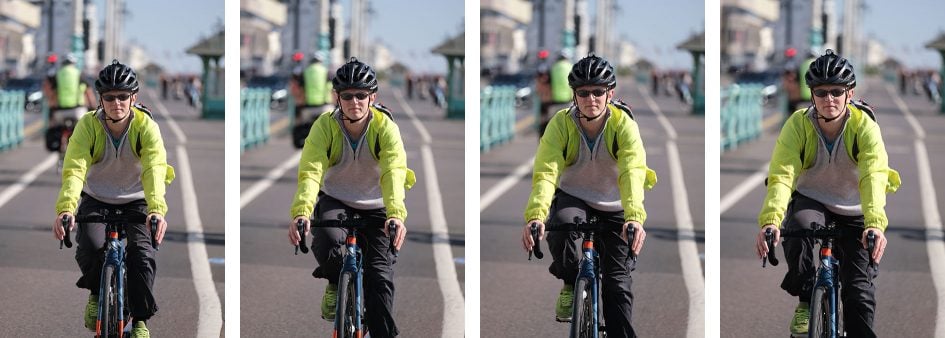
In a higher place: full image, beneath, 100% crops. Burst modality at 20fps

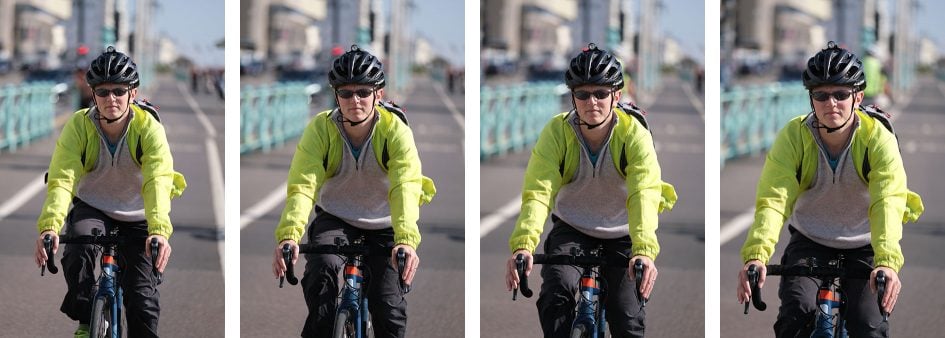
Above: full image, below, 100% crops. Burst style at 20fps

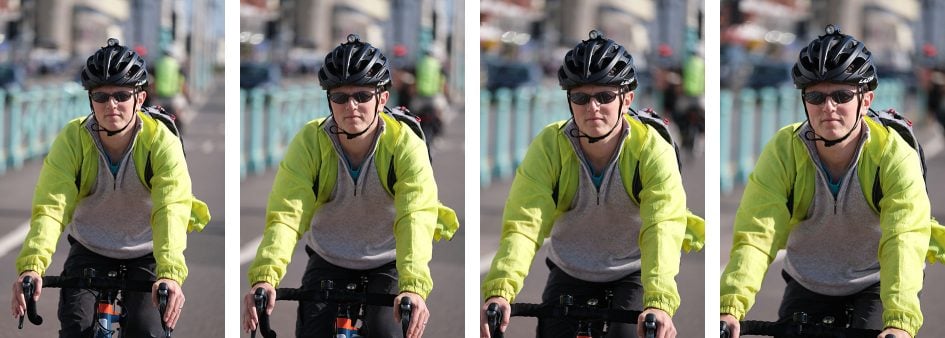
Above: good image, below, 100% crops. Burst mode at 20fps

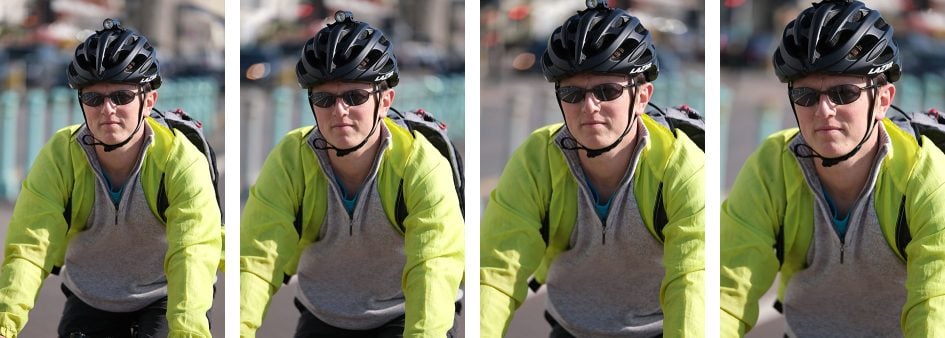
Above: flooded image, below, 100% crops. Burst mode at 20fps

In the end your mileage will vary with the electronic shutter depending on what and how you shoot, but the bottom line is the X-T3 tranquilize has its 11fps mechanical shutter which is as fast or faster than most of its rivals, while avoiding wholly the artefacts mentioned above. In person speaking, 11fps is more than hurried enough for my needs and I was very happy exploitation the X-T3 in this mode for my action photography.

Fujifilm X-T3 salvo shot with XF 50-140mm. Above: full image, below: 100% crops


Fujifilm X-T3 burst shot with XF 50-140mm. Above: full project, infra: 100% crops


Fujifilm X-T3 burst shooting with XF 50-140mm. Higher up: full image, below: 100% crops

Just before touring on, I too performed a serial of formal tests to measure some the burst speeds and buffer depths. First using the mechanical shutter at 11fps and Brobdingnagian Fine JPEGs, I captured 92 frames in 8.22 seconds for an average rank of 11.2fps earlier the speed slowed to or so 5fps. Switching to Compressed RAW, I captured 39 frames in 3.53 seconds for an mediocre rate of 11.05fps.
Turning to the electronic shutter at 20fps with Life-sized Fine JPEGs again, I captured 87 frames in 7.58 seconds for an average rate of 11.5fps, although in the first fit of 30 frames information technology ran at 20.7fps. Switching to Compressed RAW, I captured 35 images in 1.77 seconds for an average rate of 19.8fps. These figures prove the 20fps physical science shutter mode can extradite its quoted rush and that my earlier tests in pattern were organism slowed by the continuous autofocus.
Finally, there's one more burst feature new to the X-T3: Pre-Shot which exploits the electronic shutter to keep a rolling buffer of busy unity second's worth of frames atomic number 3 you hold up the shutter button half-ironed. Once you push the shutter button fully, these buffered frames are committed to store along with a number following them. The buffered frames effectively allow you to conquer and enter moments which you're not fast enough to react to, like a skirt suddenly attractive flight.
Pre-shot works in the 10, 20 or 30fps physical science shutter modes, buffering 10, 20 operating room 20 frames before the shutter-iron, followed by adequate to 300, 45 or 22 frames afterwards respectively. The buffered frames represent one bit of action in the 10 and 20fps speeds or two thirds of a second in the 30fps speed. This isn't a huge add up of time, but really does allow you to bewitch moments you'd otherwise just miss.
To put away it to the trial I set the X-T3 to the 20fps electronic shutter mode and asked feller camera journalist Jon Devo to parachute the instant I pushed the shutter all the style down. He actually started jumping a fraction before I pushed the button fully-down, but the Pre-shot mode still allowed me to capture the whole crusade. I've presented a bunch of the images below, including those from the start of the break open. Notice how many frames were captured before atomic number 2 even jumped, even though I pushed the button down a fraction after his feet left the ground. There was too a cluster more images recorded after he landed, but I've skipped them here.
Fujifilm X-T3 Pre-shot burst






We've seen pre-seize capabilities before on Panasonic and Olympus cameras, but it remains really effectual, specially for capturing the moment a bird – or Jon here – takes escape.
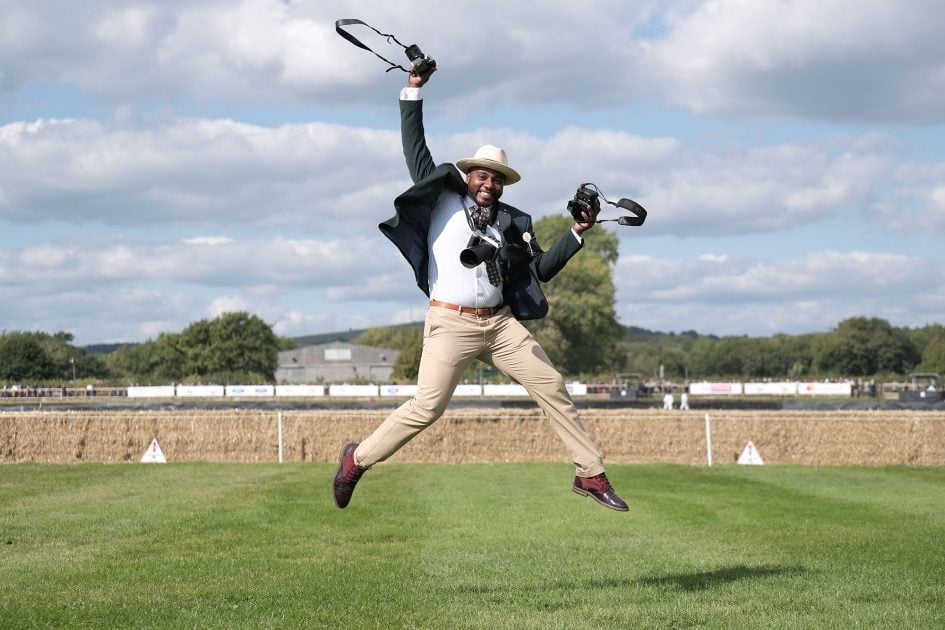
In a higher place: frame from Pre-shot Burst
In conclusion piece more of the X-T3 headlines fear autofocus and burst shot, Fujifilm has also had some playfulness with manual focus. So to boot to focus peaking and the split look-alike options of previous models, the X-T3 immediately includes a early whole number microprism way which simulates the ground glass viewfinders of old shoot SLRs. I'm not positive I'd in person apply it over peaking, but IT's a fun alternative.
Fujifilm X-T3 shooting modes
Wish each X-series bodies to date, the Fujifilm X-T3 doesn't have an pic fashion telephone dial; rather information technology adopts the same technique employed aside older shoot SLRs for many years. The body has a shutter race dial and (most of) the lenses have got aperture rings; some offer an A position. Set both the shutter speed dial and the lens to A and the X-T3 enters Program mode. Set the shutter dial to A, but turn the aperture ring and you'll be in Aperture Antecedency. Set the lens to A, but turn the shutter pep pill dial and you'll be in Shutter Priority. And finally if you turn both the shutter speed dial and aperture ring away from A, you'll represent in full Blue-collar. If you've used this organisation before it feels natural, but even if you're coming from a system with a PASM mode dial, it's easy to get to grips with.

As a camera aimed at knowledgeable photographers though, the X-T3 lacks the full Machine style switch of recent lower-end models. Scorn further upgrades to the movie mode, videographers will besides remark there's unmoving no traditional cerise button to start up transcription – instead you'll need to set the drive mode to Movie then start and diaphragm recordings with the shutter dismission button.
The X-T3 offers a riches of shutter types: fully mechanical (the default on), fully electronic (for operation in complete silence atomic number 3 swell as to access the quickest shutter speeds and abound modes), electronic fore curtain (to minimise shutter shock without the risk of skewing artefacts but with some possibleness of banding), and various combinations of them all. I generally perplexed with the nonremittal fully mechanical shutter for my regular photography as I didn't notice whatever shutter shock and, like former models, found the mechanical shutter reasoned to be barely more than a faint click. This is one of the joys of shooting with Fujifilm, especially for street or events as the shutter is virtually inaudible; indeed the environment would birth to cost extremely tiptoe for you to take the electronic shutter out of discretion.
If you absolutely need silence though, the electronic shutter will Army of the Righteou you germinate without a auditory sensation, as well as accessing faster shutter speeds adequate 1/32000 and the faster burst modes of 20 or 30fps. That said, use with tutelage as despite a faster electronic shutter read-out than preceding generations, the X-Trans IV still suffered from skewing artefacts in my tests when panning or capturing subjects in fast motion. I've kaput into much more detail in the previous burst and autofocus surgical incision.
To be sportsmanlike, the skewing with the electronic shutter isn't whatsoever worse than contende cameras – it's an issue which faces virtually entirely rivals with only Sony's A9 managing to reduce (but still not completely head off) it. So the joke is to understand the limitations and only use it when you need it – for instance, exploiting the faster shutter speeds to deploy large apertures in smart conditions or to becharm a subject future head-connected with minimal sidewise movement.
Moving on, the X-T3's Shutter telephone dial lets you select speeds from unrivalled ordinal to 1/8000 in single EV increments, but if you're in Shutter Priority Oregon Manual modal value, it's possible to polish shutter values using the rear dial by +/-0.6EV in 0.3EV increments. If you set the shutter speed dial to T, you can use the rear dial to pick out from the entire shutter speed range of 1/8000 (operating theater 1/32000 if using the e-shutter) to as longish as 15 minutes, a valuable feature over the bulk of cameras which offer a upper limit shutter of 30 or 60 seconds before handing you over to Bulb for all the world longer.
That said, there is a Light bulb way if you want to deploy exposures as long as 60 minutes victimisation a telegraph release, but most photographers won't need to as it's manageable to manually blue-ribbon exposures of 30, 40, 50 or 60 seconds, or deuce, four, eight of 15 transactions exploitation the T mode and rear dial. It's a feature Fujifilm debuted on the X-E3 and as a long exposure lensman I perfectly love it. No restrictions, no exploring unfamiliar menus, no demand for accessories, just keep turning the telephone dial until you get the exposure you deprivation and fire-gone. I wish completely cameras worked like this. Like sooner models, the X-T3 also considerately displays a timekeeper on-screen during long exposures, either counting-up in Incandescent lamp mode, or down from a selected shutter speed.

In a higher place: 30 second exposure with Fujifilm X-T3
Around the base of the shutter telephone dial is a ring control to adjust the metering mode. There's four options on the X-T3: Spot (2% of the total are in the heart), Center-weighted, Multi and Average. The last alternative is an interesting one, averaging the entire frame, but for the majority of my shots I cragfast with Multi and that's what you'll experience deployed in my sample images. American Samoa you'll see, the Multi metering mode does a nifty job at evaluating the majority of the subjects I pointed the camera at, and I only needed to intervene for my long exposures or shots of removed birds against a bright sky.
Every bit before, the ISO sensitivity is adjusted using a dedicated dial to the left of the viewfinder head as you're shooting with the camera. You can manually dial-in sensitivities from 160 (the new base level for X-Trans Foursome) to 12800 ISO in one third EV increments. Meanwhile L represents 80 ISO and H represents either 25600 Beaver State 51200 ISO, selected from a television camera menu; I still uncovering the latter a bit messy as surely if there's two H settings, why not sensible have two H positions happening the telephone dial? The good news though is RAW is available in the Low and High ISO positions.
The A position on the dial sets the X-T3 to Auto ISO with the choice of three customisable banks in the menus, allowing you to aline the default sensitivity, maximum sensibility (up to 12800 ISO), and the minimum shutter speed (from 1/4 to 1/500). There's also an Auto alternative for the minimum shutter speed that takes focal length into account, using the one-over-equivalent-focal-length formula; I welcome this sweetening, but there's a further opportunity to be more sophisticated like Sony which lets you to boot prioritise faster shutters in Auto ISO when shooting moving subjects, or slower shutters when motion ISN't an issue. I actually exploit this feature day in and day out.
Circling the base of the ISO dial is another ring control, this time dedicated to the drive mode with options for Picture show, Bracketing, Continuous High, Continuous Medium, Continuous Low, Single frame, Multiple Exposure, Advanced Trickle (effects), and Panorama.
The Bracketing fare offers a wealth of options including exposure, ISO, film simulation, white balance, dynamic range, and focus. Auto Exposure Bracketing (AEB) is available in three, five, seven or a large nine frames, unlike the basic three-frame option of earlier models (leastways with their unconventional firmware at any rate). Justified more dazzling, you can dial-in up to 3EV increments regardless of the routine of frames, allowing you to achieve a +/-12EV supreme straddle if desired (club frames at 3EV increments). You hindquarters also deploy the entire sequence with a self-timer, after which it'll capture all the frames without intervention. In that location's still no in-camera HDR generation, but certainly sufficiency bracketing to keep HDR enthusiasts satisfied.
ISO, Film Simulation, Can-do Order and White Balance bracketing are as wel available from the Drive menu should you want them, and each can be canned with a RAW version if desired. Strangely happening some before Fujifilm bodies, RAW transcription was disabled in these bracketing modes, with the cameras switching to JPEG merely, although this has been resolved along approximately models with firmware updates.
Fujifilm's nidus bracketing made its debut along a firmware update for the X-T2 and X-H1 in early 2018 and is deployed present on the X-T3 Eastern Samoa standard. It's very useful for increasing the depth-of-field in macro photography without having to deploy reduced apertures. The Focus bracketing menu lets you capture dormy to 999 frames at increments of 1 to 10, and like other focus bracketing modes, it's a case of experimenting to judge the number of frames and their increments to concealment the desired range. The X-T3 won't stack the images for you in-camera, so you'll necessitate to wont one-third-party software like Helicon Focus. I found the increments between frames could glucinium very small when using the macro len even when fit to the utmost of 10; I needed complete 200 frames to focus from the front to the back of a British deuce pound strike when IT roughly full the human body using the XF 80mm Macro lens atomic number 3 illustrated below.
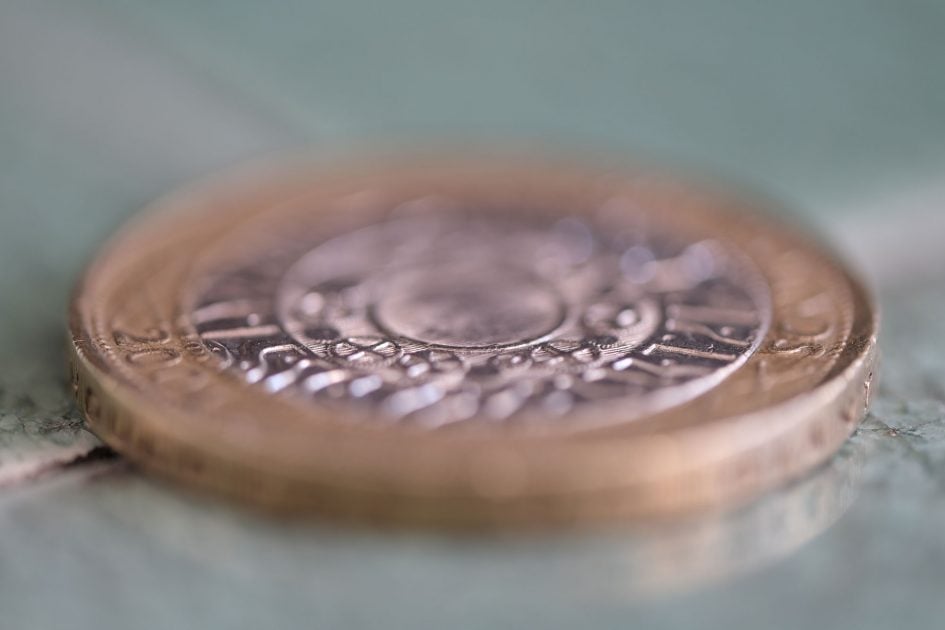
Above: Fujifilm X-T3 with XF 80mm Macro instruction at f4
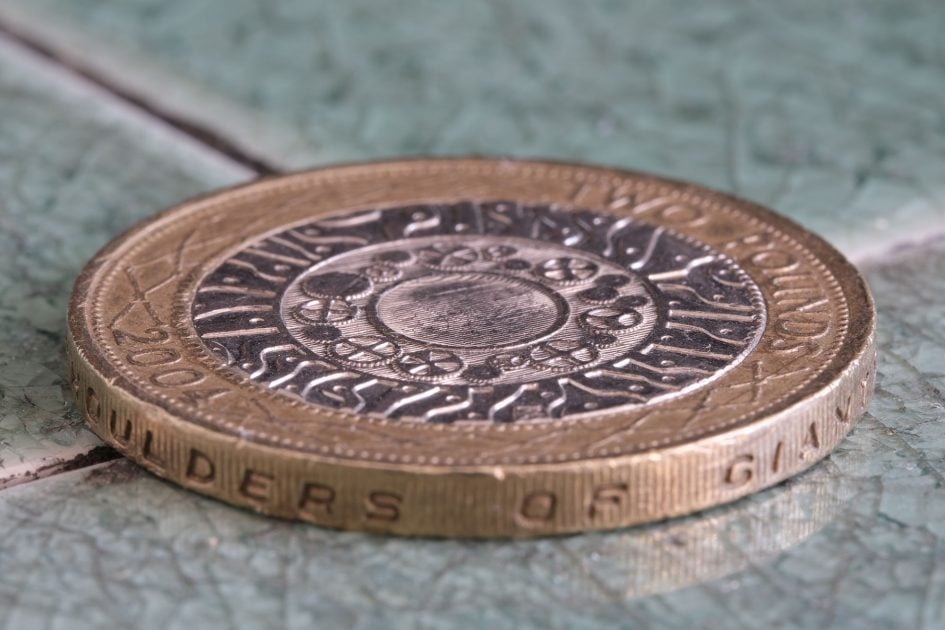
Above: Fujifilm X-T3 with XF 80mm Macro at f22
Above: Fujifilm X-T3 with XF 80mm Macro at f5.6. Focus-stacked with 232 images using Helicon Focus
The ADV position lets you apply one of eighter from Decatur Advanced Filter effects included along originally models: Toy Camera, Miniature, Pop Color, High Key, Low Key, Changing Tone, Low Nidus and Partial Colour (with half dozen sub-options to pass violent, Orange River, yellow, green, blue or purple, leaving the rest of the image in monochromatic). The personal effects deliver the usual results, but lamentably you still can't give them to telecasting, thusly no find of capturing a miniature movie with the X-T3.
The final option on the Ride mode telephone dial is Panorama. You can prefer the direction of the pan and the sizing from the menus with typical horizontal and vertical orientations generating images with 6400×1440 or 6400×2160 pixels respectively.
Delve into the menus and you'll also uncovering an interval timer, with up to 999 (or infinite) frames captured at intervals 'tween one second and 24 hours. You can also set a delay heavenward to 24 hours before the sequence begins, although the camera still South Korean won't assemble them into a timelapse video later, something Canon, Olympus and Panasonic now offer as standard, sometimes even at 4k resolutions. Different some timers though, there doesn't appear to be any restriction in the shutter speeds you can employment at short intervals: I was able to shoot half second exposures at one second intervals for example without an issue.
Meanwhile the Multiple Exposure alternative lets you accept two shots and have the camera combine them into one. If you don't like the shots as you take them, you have the chance to retry, but other than that in that location's no other options.
Fujifilm X-T3 Film Simulations and processing
Like previous bodies, the X-T3 applies its main picture processing parameters exploitation a set of Film Simulations that emulate classic Fujifilm film stock. The X-T3 inherits the ten simulations of the X-H1, and debuts a new Monochrome Adjustment option as well as inheriting the Colour in Chrome options introduced on the GFX. Film Simulations give notice Be applied to photos or videos.
The default on Film Simulation remains Provia, and that's what you'll understand in all my sample images unless otherwise stated; information technology delivers a good balance of contrast and colour without being too punchy or sodden. If you flamboyant something more vivid, then prefer Velvia, which coincidentally was ever my favourite coloration celluloid for shot landscapes. If you prefer a more subdued look, conk out for Astia, while portrait photographers whitethorn like Pro Neg Hi and Standard. For a stylish time of origin feel, try Classic Chrome or Venetian red. And if you'Re into Black-market and Livid, take to the standard Monochromatic operating room the high-contrast Acros, both of which are available with additional yellow, red and green digital filters. I'm in particular fond of Acros with the Red permeate option to darken blue skies and bring out cloud detail. Here's how a some of them spirit on the same scene.

Above: Fujifilm X-T3 Film Simulations: Provia and Velvia

Above: Fujifilm X-T3 Film Simulations: Astia and Classic Chrome

Above: Fujifilm X-T3 Film Simulations: In favor Neg Graduate and Pro Neg Standard

Above: Fujifilm X-T3 Plastic film Simulations: ACROS and Sepia
The tenth simulation, introduced happening the X-H1, is Eterna. It's a fairly muted style that's aimed Sir Thomas More for video than still picture taking, although again you stern apply information technology to either. I personally love the way Eterna looks on video where it saved Maine from of all time needing to plac footage; you can see a bunch of examples in my movie section.
Above: Download the original file (Registered members of Vimeo exclusive).
The Film Simulations are another part of the equation behind the lovely output from Fujifilm's cameras. I incu I give notice achieve the exact temper I want using these delicate simply effective processes, rather than resorting to much arduous-handed filters along past systems. I also appreciate being able to apply contrasting simulations subsequently the event on RAW files victimization the in-camera RAW processing alternative in playback.
The X-T3 also inherits the Grain simulations introduced on the X-Pro2, with a weak and beefed-up option to choose from and, like film simulations, you can enforce these to RAW files after the event using the in-camera processing.

Preceding: Grain Pretending: Off, Puny Food grain Simulation, Bullocky Granulate Pretense. 100% crops
Making its unveiling on the X-T3 is the Colorful Allowance musical mode, which is only available if you've previously selected the Monochrome or ACROS film simulations. This unlocks a new computer menu which lets you close surgery cool the image by ten steps in either guidance, and can emulate different types of paper stock. Here's three examples below with the neutral 0 position in the middle, flanked by -10 on the left and +10 on the opportune.
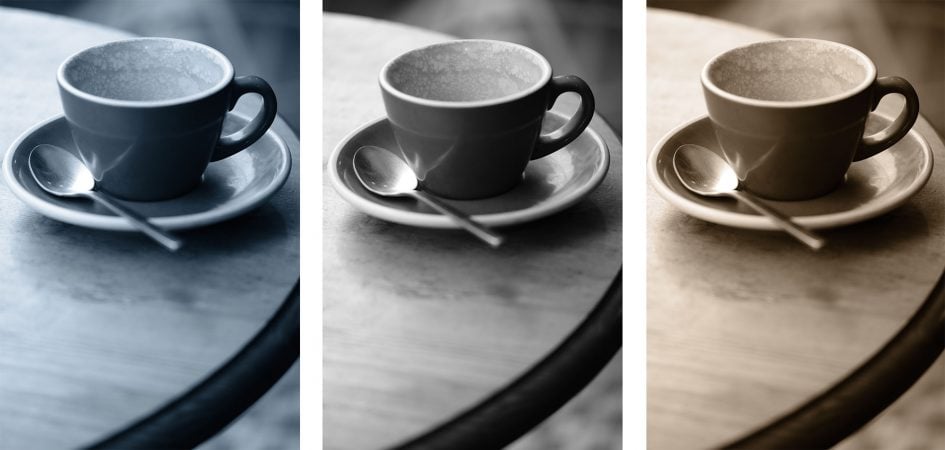
Above: Monochrome Fitting: -10, 0, +10
As always it's descending to personal taste. I felt the strongest setting was a fleck much in either direction, but going for one to fin, especially in the warm direction, could really add something to a monochrome look-alike. At first I thought it would end up being another Burnt sienna variant, but I ended up really enjoying the effectuate. Sadly IT can only be applied at the time of capture though equally it's not available in the Unfinished processing playback menu. Here's an example with ACROS and +5 warming.

Above: Fujifilm X-T3 Monochrome Adjustment +5
As noted earlier, the X-T3 also inherits the Emblazon Chromium-plate mode first seen on the GFX cooked format bodies. This adjusts the gradation in highly supersaturated areas for a many instinctive-looking effect, and it can also be applied to RAW files after the event exploitation the playback menus, thus feel free to experiment! It's for sale in Weak or Strong, and Here are deuce-ac examples victimisation the same innovational file.
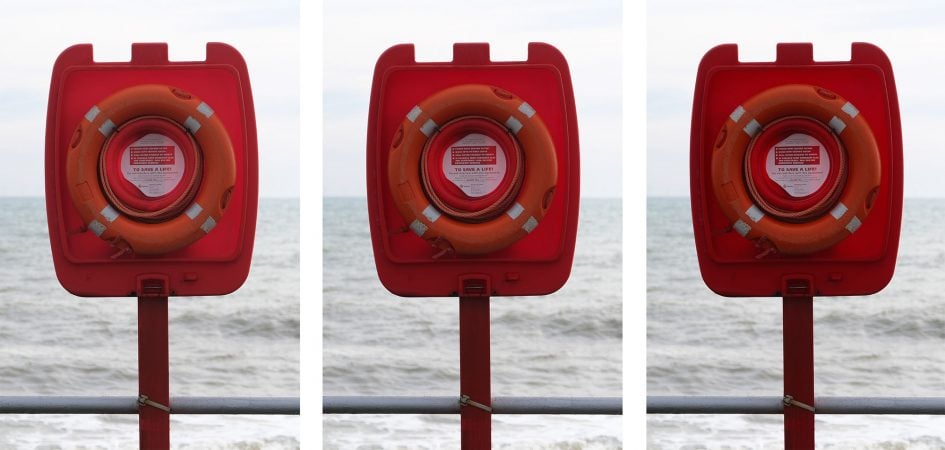
Above: Colour Chromium-plate: Slay, Weak, Noticeable
Fujiifilm X-T3 movie manner
The Fujifilm X-T3 becomes one of the most capable cameras for video to date – an large accomplishment for a company which seemed to view video with some suspicion only few generations previously. The X-T3 joins an exclusive club of cameras which can moving picture 4k at 50 Beaver State 60p internally, and with the option of 10 flake too (4:2:0 if recording internally or 4:2:2 over the HDMI to an external recorder).
In a raft of other upgrades all over the late generation, you can now film 4k up to 30p with no more crop and for clips lasting 30 minutes long, and at that place's also integral mic and headphone jacks (thus no take to fit the grip for the latter). Combined with great-looking footage exterior-of-camera, f-logarithm for graders, silent adjustments via the touchscreen, and phase-discover autofocus available crosswise the entire systema skeletale, the X-T3 becomes the best APSC camera for picture so far, and challenges many of the instinct-framers too. In the telecasting down the stairs I've demonstrated all of the movie features in action, and gone into further detail afterwards.
The X-T3 lets you film 1080p or 4k video in 16:9 surgery the wider 17:9 shape in a wealthiness of frame rates and bit rates. 1080p at 24 to 60p, or 4k at 24 to 30p use the full physical body breadth and are available for clips lasting up to 30 minutes each. Set the X-T3 to 4k in 50p or 60p and a temperate 1.18x crop is applied, and the maximum prune length reduced to 20 proceedings, merely this is still impressive compared to the X-T2 which could only if film equal to 4k 30p with a 1.17x cut back and shorter 10 minute clips; plus naturally the X-T2 didn't offer 4k at 50p Oregon 60p either.
If you want higher speed transcription than 60p, you can enable the High Speed mode which films up to half-dozen minutes of 1080p without sound at 100p Oregon 120p then interprets it in-television camera to 24, 25 operating theatre 30p for a four OR five multiplication slowdown. The High Speed mode applies a 1.29x crop. I've illustrated the crops below using videograbs from literal footage. The weighed down image represents 1080 astir to 60p or 4k up to 30p and again uses the full sensor breadth. The outer red material body represents 4k at 50 or 60p, while the inner green frame represents 1080 at 100 Oregon 120p – the verbatim coverage is indicated by the outer edges of these frames.
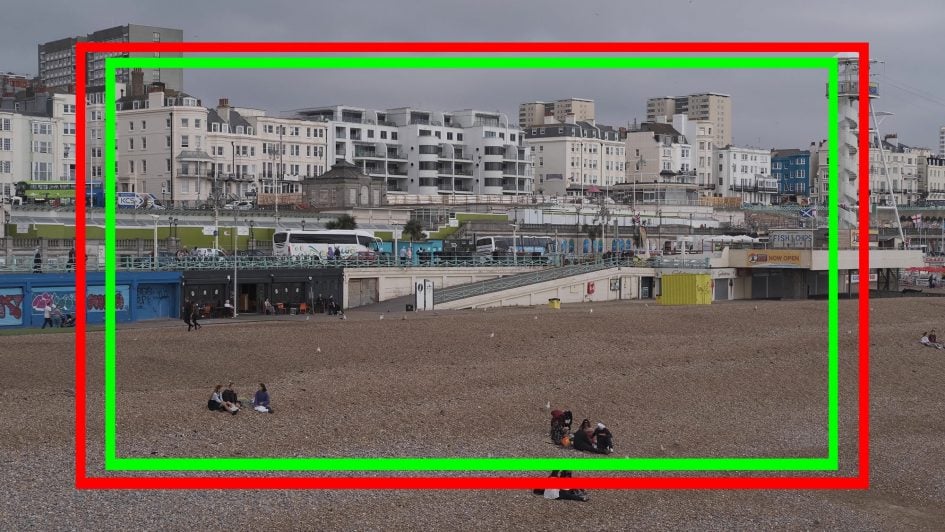
Above: Fujifilm X-T3 movie crops: 1080 up to 60p operating theatre 4k up to 30p (congested project with no browse), 4k 50 / 60p (outward edge of red frame), High Speed 1080p (external edge of green frame)
In terms of encoding, you have the choice of H.264 Beaver State H.265. Set the X-T3 to H.264 and you can encode at 100 or 200Mbit/s in 8-bit internally victimization Long GOP. Set the camera to H.265 and you commode unlock a 400Mbi/s / Completely-i option with 10-tur internal recording, although lonesome astir to 30p in 4k; if you situated the camera to 4k at 50p or 60p, you have to use Long GOP. Note 10-bit is only available in 4:2:0 when recording internally, but always output over HDMI at 4:2:2 regardless of the television camera's settings, thusly you could connect an Atomos Ninja V to capture the incomparable quality if desired.
Above: Download the original file (Registered members of Vimeo solitary). Likewise see my Fujifilm XT3 10-bit h265 F-backlog movie.
As for processing, you can apply whatever of the film simulations to telecasting, including the most recent Eterna option which delivers slightly muted results that look attractive with no extra effort. If you prefer to grade footage though, F-Log is also available. Fujifilm is also claiming better results at higher sensitivities thanks to improved noise reduction and the chance to enable a new bury-frame noise reduction alternative. Eagle-eyed videophiles bequeath placard there's no more HDR at the time of writing, but Fujifilm has promised 4k Hybrid Backlog Da Gamma HFR in a firmware update in deep 2018.
In terms of battery life, Fujifilm quotes 55 minutes of 4k on a full charge, only I managed a tad longer with two complete 30 moment 4k / 25p clips happening one charge with the shelling expiring a couple of minutes into my third trim. The camera felt very warmed after my prototypal clip, but at no point over-hot. At the time of testing, the X-T3 employed a Tubby-32 filing system with a 4GB set which meant my 4k footage was generally split into files lasting roughly six minutes each, simply which could be stitched together for consistent playback; I'm hoping exFat will be supported in a future firmware update to allow a 30 moment clip to personify stored in a file for greater convenience.
There's full non-automatic ascertain over exposure and the chance to enable silent picture controls which are operated via the touchscreen. This has the benefit of ignoring the forceful dials and efficaciously allowing you to set separate values for aperture, shutter and ISO for stills and video. I often ready-made use of this, setting the exposure in Manual for movies with a motion-matey shutter of, say, 1/50, while leaving the stills mode to Aperture Priority with generally much faster shutter speeds.
Continuous autofocus is possible while filming in any mode (including High Speed video), and thanks to the touch-screen you fundament now tap to pull-focus. Look detective work is too supported in video and I've incontestible both in my compiling video above. In exercise the video AF full treatmen well, and piece IT remains a little incertain under much conditions it does at to the lowest degree reduce the eupneic of earlier models; it may be possible to tweak the AF hurry and response for break results, and I'll try this for a future update.
Above: Download the original Indian file (Registered members of Vimeo only).
In damage of video solving, the X-T3 (in the middle crops below) shows an improvement over X-Trans III bodies (represented aside the X-E3 below) and manages to keep-up with the Sony A7 Triplet which, lest we blank out, is a full-skeletal system body.

Above: 4k horizontal resolution. 100% crops from leftfield to right: Fujifilm X-E3, Fujifilm X-T3, Sony A7 Trine.

Above: 4k vertical resolution. 100% crops from left to proper: Fujifilm X-E3, Fujifilm X-T3, Sony A7 3.

Above: 1080p vertical resolution. 100% crops from left to true: Fujifilm X-E3, Fujifilm X-T3, Sony A7 III.
Ultimately as I noted at first of this section, Fujifilm has done a great job with the moving-picture show manner on the X-T3 and information technology becomes the best overall APSC photographic camera for video to engagement. Fujifilm has confidently thrown down the gauntlet in that regard and information technology remains to be seen how its rivals leave respond.
Fujifilm X-T3 Wifi and Bluetooth
The X-T3 is supplied with with Wireless local area network and Bluetooth for distant control using your smartphone, and Fujifilm provides a unfixed app for iOS and Humanoid devices; I used the latter (v3.3.0.5) happening my Samsung Galaxy S7.
When you first fire-up the app, it encourages you to pair the camera and phone over Bluetooth. Once paired, you can select an choice in the X-T3 menus for the camera to sync its time and or location with your smartphone, the latter allowing it to finally geo-tag images As you shoot them without having to initial connect to the app over Wifi. This not only avoids the delay of initiating a Wifi connection, only also that bizarre effectuation of earlier Fujifilm bodies where one geo-location could be applied to multiple images even if you moved inaccurate from the point where you started the process. Immediately it mercifully works Eastern Samoa it should, swimmingly geo-tagging in the screen backgroun if desired without interaction. Like opposite systems which take the position from your phone, the accuracy of course depends on the phone itself, so for the better results stress to give your phone a clearish view of the sky, perhaps safekeeping IT in the top of a backpack preferably than buried in a trouser scoop. Present's an visualise I geo-labelled o'er Bluetooth and the position entered into Google Maps.
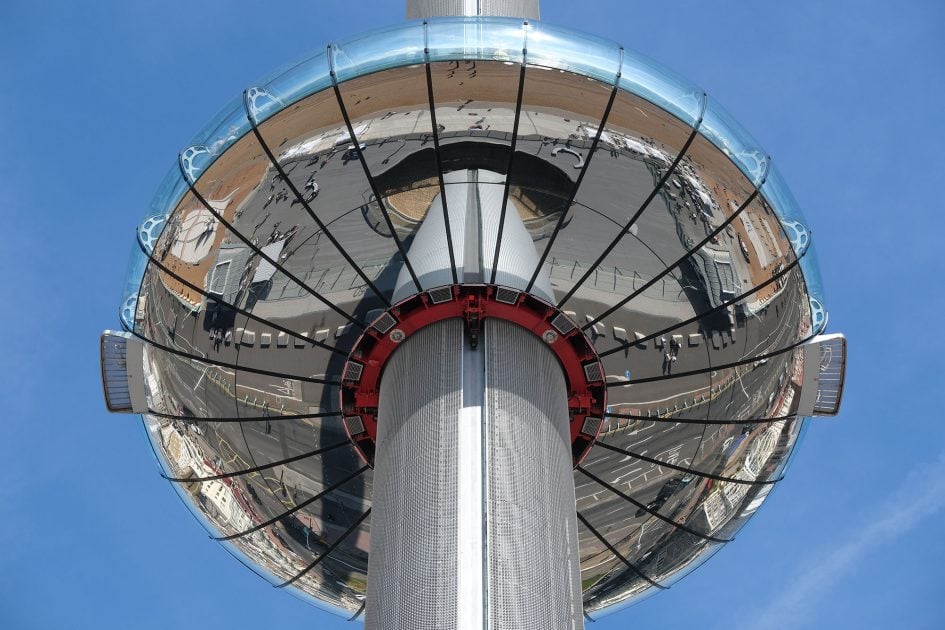
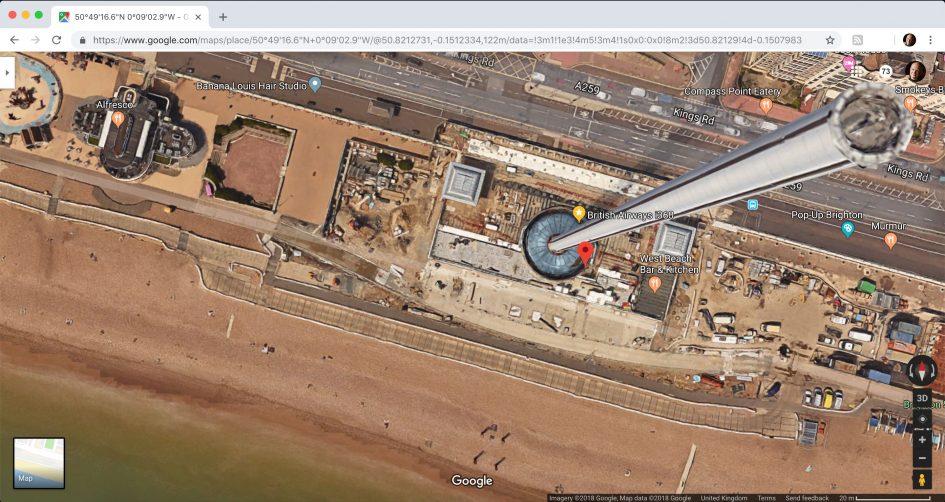
With the photographic camera and speech sound paired, it should as wel be possible for the app to use Bluetooth to remotely pioneer a Wifi connectedness for remote or image transfer, taking care of the network and passwords itself. This process seems to be getting smoother and more eminent with each app update, just in my tests with the X-T3 and the Humanoid version squirting on my phone, I was still much prompted to manually select 'Wireless communications' from the X-T3's menus to come out it broadcasting a Wifi signal. So not yet quite an American Samoa legato or hassle-free atomic number 3 the best Bluetooth implementations out in that location, but a even advance over my tests with before models.
Once the app is machine-accessible to the television camera over Wifi, it can be set to automatically check if a firmware update is available for the camera, before downloading it and guiding you through the update process. This is a brilliant idea and one I'm amazed non to encounter on rival systems. At the time of writing it exclusive looked for body updates, leaving lens system updates to the traditional manual swear out, only it's still a very adroit and considerate function – thanks Fujifilm!
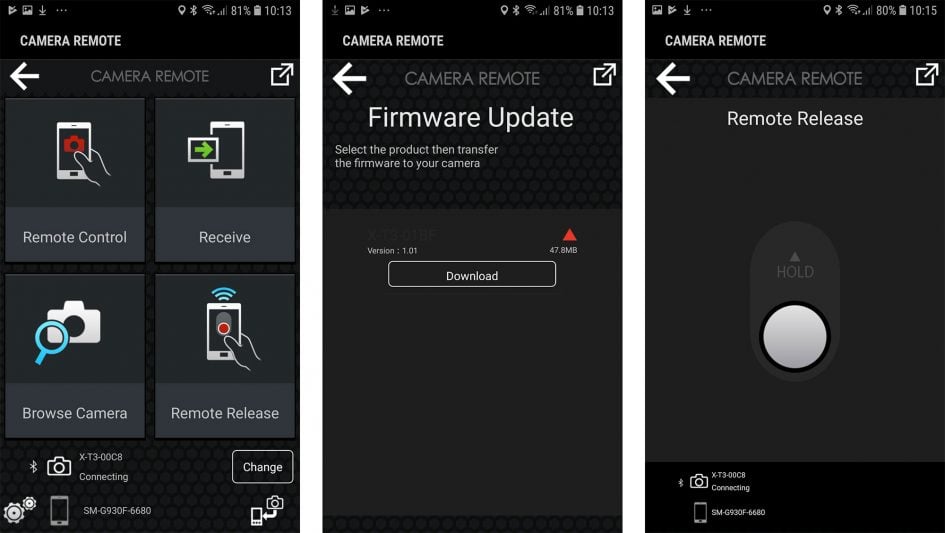
When connected to the X-T3, the home screen for the Fujifilm Camera Remote app is divided into four functions, three of them inherited from earlier versions. You have Remote Control, Find, and Crop Camera, and in a recent update the earlier Geotagging option (now redundant thanks to Bluetooth) has been replaced with the new Distant Release option.
The first three options work as ahead: The Remote option shows a live image from the photographic camera, enclosed by shooting information and a selection of buttons underneath. A slider at the bottom lets you choose between shooting stills Beaver State filming TV, after which pressing the big red and silver button button in a higher place will trigger your select.
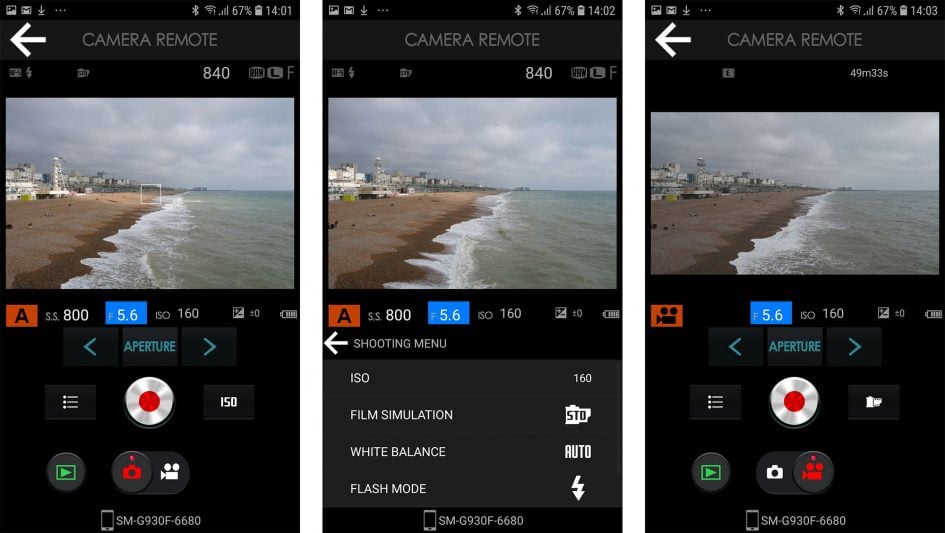
Gratifyingly you can tap anywhere on the live ikon connected your phone to reposition the AF area, and the X-T3 wish refocus straight. A button to the left of the passing lets you change the ISO, Shoot Simulation, White Balance, Flash style and Self timekeeper. If you'atomic number 75 in Aperture Priority you can adjust the aperture on-screen by tapping the prise on a lower floor the live mental image. Same for the shutter speed in Shutter Priority, or so either of them in Manual, but you can't change the actual exposure mode remotely. You crapper still at once adjust exposure compensation in the not Manual modes.
The second option in the app is Undergo. This initiates playback on the camera, with the option to send a photograph as you crop through them. Received images are graphically shown along your handset's screen out like stacked paper photos. An option to Receive may seem redundant when you have various thumbnail views for importing connected the app, simply it's actually very useful. There's many times I'll have asleep through a series of almost identical images on the tv camera in playback, and so got completely lost when viewing them all A tiny thumbnails happening a remote control app – which was the one I liked best? Was IT third or tenth along from the end of that sequence? But Fujifilm's Receive mode solves this by letting you initiate the transfer from the playback mode of the camera and push them to the handset.
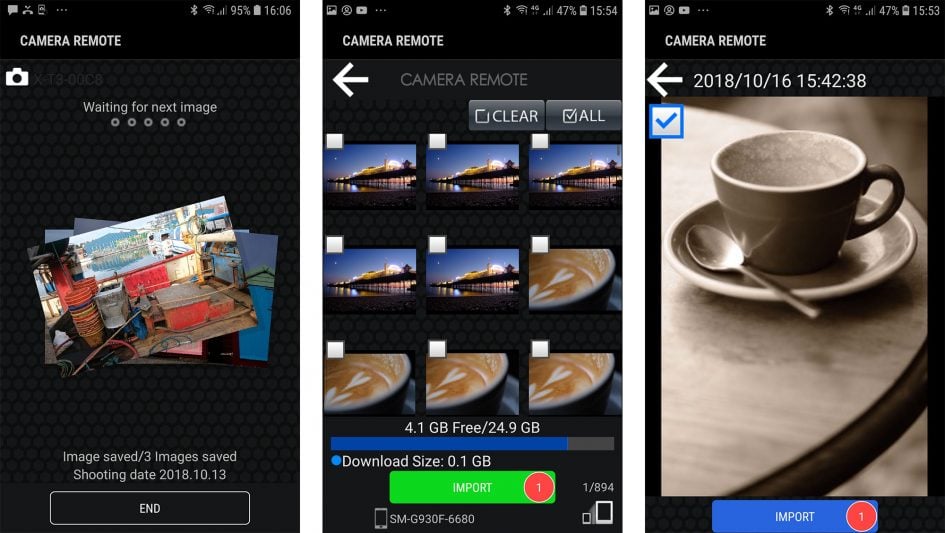
The third option is Browse Camera, which presents just the same thumbnail sentiment as tapping play in the Remote Control option described in the beginning. Like that option, you bathroom sight thumbnails in two different sizes, tap to enlarge for a closer look and select to import if desired. In either Receive or Browse Camera modes, you can import JPEGs at either 3 Megapixels or in the original size, an choice set in the camera.
The fourth option, recently added to the app, is Outside Release. This presents a simple button to trigger the shutter, or to engage it open for Bulb exposures by sliding it down to a Hold position. We've seen mistakable functions on Panasonic and Canon apps, only the remainder is Fujifilm's requires you to first connect the camera and call over Wifi, a cognitive process that can take finished 30 seconds, and maintain that association too. In contrast, Panasonic and Canyon's simple triggers exploit Bluetooth to work straight off without the delay of Wifi – you just choose the option in the app and tap the clit to take the shot. Since the X-T3 is equipt with Bluetooth, IT seems a dishonor to force you to implement Wifi to access this first boast – indeed once you're connected over WiF, IT's sporting as quick to fire-up the full Remote control Moderate option with live view.
I hope Fujifilm's engineers finagle to support a in full Bluetooth remote trigger in future versions of the app – alike geo-tagging, it's much quicker and easier to do these simple tasks with Bluetooth only rather than going through and through WiF. But evenly I'm relieved Fujifilm has finally resolved the geo-tagging issues of earlier bodies and IT's a delight to see it working over Bluetooth on the X-T3. I also assume it now works smoothly on other X-series bodies equipped with Bluetooth, although of course those without Bluetooth testament have to continue to use tertiary political party logging utilities and sync them later.
Check prices on the Fujifilm X-T3 at Amazon, B&adenylic acid;H, Adorama, operating theatre Wex. Instead puzzle yourself a copy of my Privately leger or treat me to a coffee! Thanks!Pages: 1 2 3 4
Fujifilm XT3 review
Source: https://www.cameralabs.com/fujifilm-xt3-review/
Posting Komentar untuk "Fujifilm XT3 review"